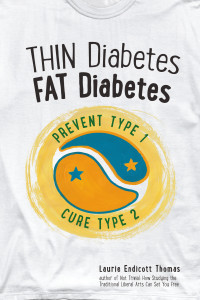The Glycemic Index (GI) is a ranking of carbohydrates on a scale from 0 to 100 according to the extent to which they raise blood sugar levels after eating. Foods with a high GI are those which are rapidly digested and absorbed and result in marked fluctuations in blood sugar levels. Low-GI foods, by virtue of their slow digestion and absorption, produce gradual rises in blood sugar and insulin levels.
The Glycemic Load (GL) takes into account the quantity of carbohydrates per serving.
Glycemic Load Calculation
Glycemic Load = Glycemic Index/100 x Net Carbohydrates
(Net carbohydrates = Total Carbohydrates – Fiber)
Promoters of low carb diets like The Zone or Paleo constantly cast dispersions on high GI/GL foods without taking into account other properties of the food. This is just another example of nutrition enthusiasts looking at nutrition in a reductionist, myopic manner.
When one looks at the GI or GL in a broader context, it becomes clear that they are mildly interesting at best and completely useless at worst.
Health or disease is the result of infinitely complex, integrated and interactive effects produced by countless food chemicals.
Deciding that a food is unhealthy simply because it has a high GI or GL is a big mistake.
The GI for carrots is 92 which is very close to the GI for sugar and white bread.
M&M with Peanuts have a GI of 33. If you judge a food solely on its GI score, you would come to the silly conclusion that M&M with peanuts is a better choice than carrots. If you decided to eat ½ lb of M&M with Peanuts, you would have consumed a nutrient deficient 1140 calories. If you ate ½ lb. of carrots, you would have consumed a nutrient-rich 98 calories. So if you feel the need to focus on one aspect of a food, you’d do much better focusing on calorie density than GI/GL.
The glycemic index is not well validated or credible. Results of randomized control trials and prospective studies have been inconsistent at best. In fact in November 2012, the authors of a large cohort study published in The Journal of Nutrition concluded that digestible carbohydrate intake is not associated with diabetes risk and suggests that diabetes risk with High Glycemic Index and Glycemic Load may be more modest than initial studies indicated.
I believe people would be better off to ignore both the GI and GL of foods and simplify their lives by focusing on a diet high in fruits, vegetables, legumes and whole grains. These are the foods that make up a healthy diet. People would also do well to avoid or strictly limit animal foods, added fats and added sugar. These foods promote disease.
Click here for an excellent article by Dr. John McDougall MD entitled “Glycemic Index – Not Ready for Prime Time”.
Click here for an article by James J. Kenney Ph.D. R.D. that discusses the Glycemic Index, Insulin Score and Satiety Index of foods






 E Excerpt from Laurie Endicott Thomas’s amazing book Thin Diabetes – Fat Diabetes by clicking here!
E Excerpt from Laurie Endicott Thomas’s amazing book Thin Diabetes – Fat Diabetes by clicking here!
Speak Your Mind